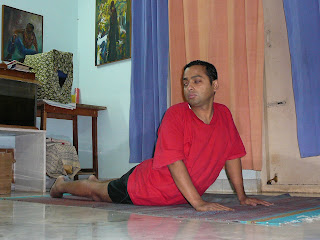Julia's Blog: Post CardJulia visited my blog recently - I visited hers quite sometime ago. I posed a question to her blog on Vande Matram. I had read a long long time ago - in so very distant past - I can't recall - that Vande Matram was composed by Jadunath Bhattacharya - the legendary musician who taught Rabindranath Tagore music during his childhood days.
Raag Desh. Should be more likely that Jadu Bhatta composed the song rather than Rabindranath - who was a good singer, but hardly an accomplished composer. Not many would know that most Rabindrasangeets were NOT composed by Rabindranath, but by Dinendranath Tagore - or Dinu Thakhur - as he was called.
************************************
After talking to some friends of mine who are not that initiated in music - I came to realise that it might be a little tough for people to distinguish the difference between composing and writing.
Well, music has two parts - the poem and the tune.
The poet who writes the song is the writer - Bankim chandra chattopadhyay was the writer of Vande Matram. Vande Matram is a poem in the novel Anandamath that Bankim wrote.
However, setting the tune or the music is the act of COMPOSITION. Since Bankim was no musician, he naturally, would not be able to compose the Vande Matram song. It's a skill issue :).
The song was said to be composed by Jadu Bhatta. Who was a legendary musician in the 19th Century. Just imagine he lived in an age of no radio and no TV, and very limited newspaper. Yet he was known from Kashmir to Kanyakumari, from Gujarat to Tripura.
He taught Rabindranath music. He was a court musician in Tripura kingdom. and I read in the childhood that he perhaps married a princess in the Kingdom of Kashmir.
A pity he did not live long; and hence he could not nurture someone similar in talent.


















